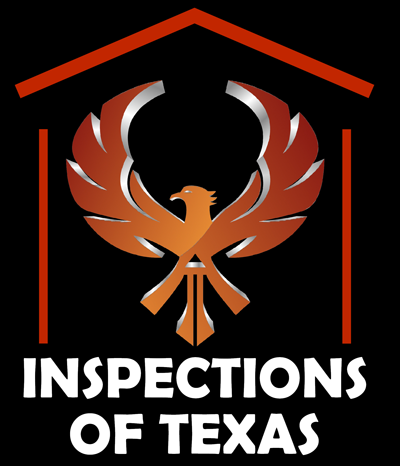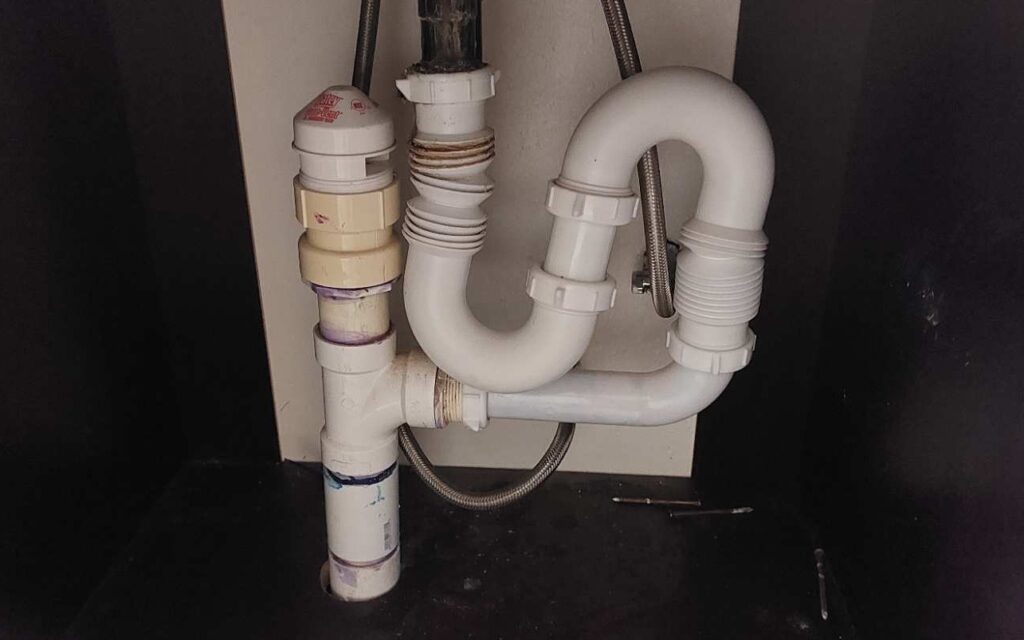The plumbing system is a major part of the 400+ items we inspect in each house. The basic plumbing rule I learned as a child was, “Hot’s on the left, cold’s on the right, stuff goes downhill, and Payday’s on Friday.” Of course real life plumbing is full of different sizes, types, and slopes. Knowledge and experience are important to get it right. Plumbing involves a lot of pipes and areas that cannot be seen. Inspectors listen for the sounds of improper drainage and look for areas where drains backup in all plumbing. Following the TREC Standards of Practice protects our clients from surprises.
Outside
Plumbing distribution starts at the meter and includes all the piping to the inside fixtures. We make note of the water pressure coming into the house. Is it too high or too low? (40-80psi is acceptable). It may need corrective measures to improve the service and longevity of the system. An important and inexpensive item is a backflow preventer. Backflow preventers must be installed on the outside hose bibs (faucets) to prevent dirty water from possibly backing up into the clean water system.
Bathrooms and Kitchens
We fill every tub and sink before releasing the water to see if it holds. Plumbing fixtures (faucets, etc.) are inspected for water flow, handle orientation, and more. Inspectors can’t duplicate a family’s need for water. However, running several faucets with hot water at the same time makes failure more likely. It loads more pressure on the system and drains, giving the best information possible.
Showers are run for a minimum of 10 minutes to inspect for leaks and clogged drainage pipes. Also, shower diverters should divert all the water to either the shower or the tub. Then we look for pressure or water flow changes when other fixtures are on (functional flow). Inspecting inside the plumbing access panels often shows evidence of leaky pipes and other areas that have the sight or smell of microbial growth.
Every toilet is inspected for firm attachment, flushing and refilling water, and for the all important air gap. The air gap inside the tank prevents dirty water from being sucked into the clean water system. Is the toilet leaking or running on? Inspectors listen for the sounds of improper drainage. If a large bubble shows up when flushed, the system needs a more in depth assessment by a licensed professional plumber.
Hydrotherapy Tubs
The process for inspecting jetted or hydrotherapy tubs is multifaceted. The tub must be filled above the jets and turned on. Bonding and GFCI protection are critical to prevent electrical shock. A surprising number of jetted tubs don’t work or don’t have GFCI protection. If there is an access panel to visually inspect, we verify if the motor is bonded for electrical safety. Most jetted tubs have sludge that sits in the back tubes from disuse, then it is blown out when it is turned on by the inspector. We recommend all previously owned tubs be cleaned and sanitized before a new owner moves in.
Water Heaters
Water heaters are listed in the plumbing section because they are integral to it. The first things inspected and recorded are the type of water heater is it – tank or tankless – whether it is gas or electric, and the capacity it holds. Gas units are inspected for visible bonding and proper ventilation. Electric units must have a disconnect switch a maximum of 69 inches from the floor if the water heater is not within sight of the panel box. Next, the condition of the unit, connections, and leaks are reported. The Temperature Pressure Relief Valve (TPR) must be attached and directed by CPVC pipe to the outside to prevent possibly scalding someone. The drain pan underneath units also drains to the outside, but without pressure. Even the 7 largest manufacturers of tankless water heaters recommend installing a drain pan because leaks cause damage, including a garage.
Inspections are visual and performance based. We report what we can see and what is a reasonable deduction from information gleaned. Our inspectors understand how houses are built and how the systems interact with each other. At Inspections of Texas we are detail oriented people who love helping others. Our 3-person team inspects every property like we’re buying it!

